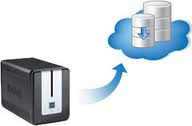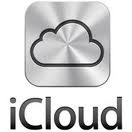![]() One of the great things about WordPress is the ability to get immediate feedback. Readers can leave comments on individual entries, and through Trackback or Pingback can comment on their own sites as well.
One of the great things about WordPress is the ability to get immediate feedback. Readers can leave comments on individual entries, and through Trackback or Pingback can comment on their own sites as well.
Imagine how excited I was to see that within hours of my first official WordPress post on my newly launched site, I had a comment. In fact, on a fairly consistent basis, within hours of most of my posts, I had received comments. Wow! Is this Internet thing great or what? What is it they say, “If you publish it, they will come?”
![]() And come they did, but “they” were BOTS (Computer Programs acting like people) and not actual people. This weekend Google honored what would have been the 100th Birthday of the famed British mathematician, Alan Turing (born June 23rd, 1912). (See the Google Doodle here.) His invention of the “Turing Test”, which is designed to test if a human can tell if the responses received from a series of asked questions are from another human or if they are programmed responses from a computer, was the inspiration for today’s article. The true purpose of this test described in a 1950 paper was to answer the question, “Can Machines Think?” (Entitled, “Computing Machinery and Intelligence”, click here for background)
And come they did, but “they” were BOTS (Computer Programs acting like people) and not actual people. This weekend Google honored what would have been the 100th Birthday of the famed British mathematician, Alan Turing (born June 23rd, 1912). (See the Google Doodle here.) His invention of the “Turing Test”, which is designed to test if a human can tell if the responses received from a series of asked questions are from another human or if they are programmed responses from a computer, was the inspiration for today’s article. The true purpose of this test described in a 1950 paper was to answer the question, “Can Machines Think?” (Entitled, “Computing Machinery and Intelligence”, click here for background)
![]() At first glance, many of the comments received seemed perfectly legitimate. Sentence structure and grammar were correct and contextually relevant. On closer examination, even though the comments were complimentary in nature, they were also very generic and could have been written about any post. Other clues that the comments were not sent by humans, but by machines, were that the sending email addresses were mostly made up of random characters and all from free email services. The final clue was the link provided by the purported author of the comment. (When you make a comment on a WordPress Site, you enter your name, email address, and optionally, a link back to your own site.) None of the links went to legitimate sites. Some went to sites that offered fraudulent software license keys at extreme discounts, others were to doorway pages setup strictly to generate revenue from Google Adword impressions, and some went to discount offers for well know pharmaceutical sold through questionable channels.
At first glance, many of the comments received seemed perfectly legitimate. Sentence structure and grammar were correct and contextually relevant. On closer examination, even though the comments were complimentary in nature, they were also very generic and could have been written about any post. Other clues that the comments were not sent by humans, but by machines, were that the sending email addresses were mostly made up of random characters and all from free email services. The final clue was the link provided by the purported author of the comment. (When you make a comment on a WordPress Site, you enter your name, email address, and optionally, a link back to your own site.) None of the links went to legitimate sites. Some went to sites that offered fraudulent software license keys at extreme discounts, others were to doorway pages setup strictly to generate revenue from Google Adword impressions, and some went to discount offers for well know pharmaceutical sold through questionable channels.
WordPress has a number of features to make sure that only legitimate comments appear on your site. The first and most powerful is that all comments can be moderated by the Administrator. On the WordPress Dashboard, a little message cloud appears showing the number of comments awaiting approval by the Administrator. If you have a low traffic site, moderating the comments manually and without the assistance of a WordPress Anti-WebSpam Plugin may be sufficient.
![]() However, if you would a little help from technology inspired by Alan Turing, you can let a “machine” determine if the comment is from a human or another machine. This is where the Akismet Anti-WebSpam plugin can help. Akismet provides a monthly subscription service for commercial sites (free for personal sites) that applies hundreds of tests to each comment and returns an up or down answer to the question: Is this comment WebSpam? The result of the Akismet tests properly tag the comment and place it in the correct Comment Queue for your further review giving you a head start on your comment moderation tasks.
However, if you would a little help from technology inspired by Alan Turing, you can let a “machine” determine if the comment is from a human or another machine. This is where the Akismet Anti-WebSpam plugin can help. Akismet provides a monthly subscription service for commercial sites (free for personal sites) that applies hundreds of tests to each comment and returns an up or down answer to the question: Is this comment WebSpam? The result of the Akismet tests properly tag the comment and place it in the correct Comment Queue for your further review giving you a head start on your comment moderation tasks.
The Akismet Plugin is installed by default with every installation of WordPress. However, you must visit Akismet.com to register for a subscription, free or paid, to get an activation key so that all of the comments to your site are submitted to the Akismet engines for review.
Learn more about Akismet
– http://www.akismet.com
Learn more about Alan Turing
– http://en.wikipedia.org/wiki/Alan_Turing
– http://www.alanturing.net/
Learn about the Turing Test
– http://en.wikipedia.org/wiki/Turing_test


